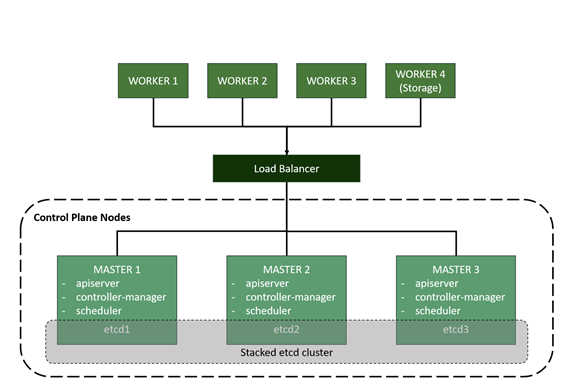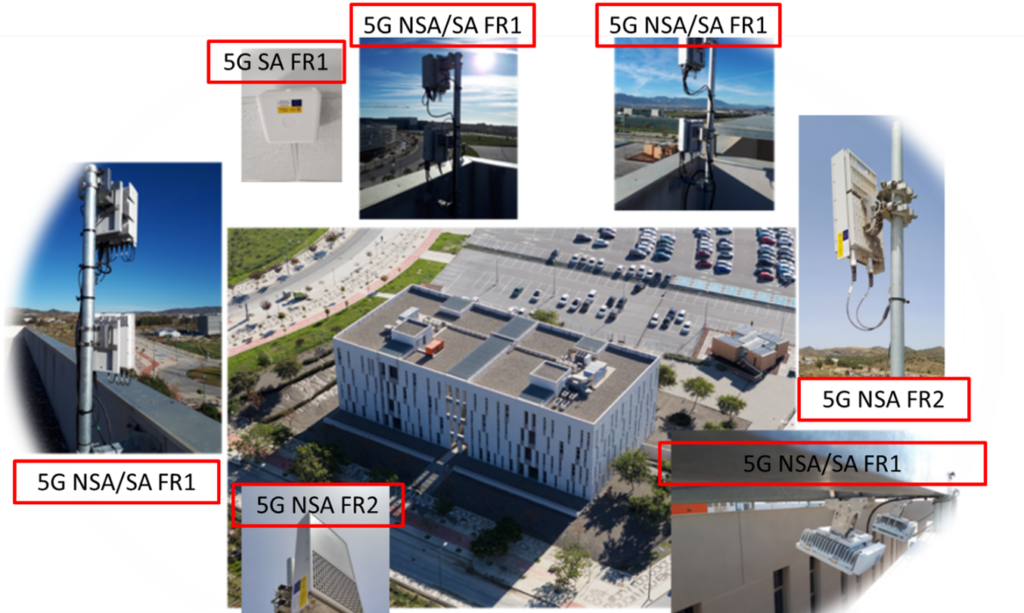5G-EPICENTRE Testbedsin Malaga
The UMA platform integrates a distributed K8s-based infrastructure with a multi-master multi-node architecture. This infrastructure is composed of three different physical servers, one for the main data center and two edge nodes to distribute the services across locations based on the experimenters’ requirements.
The UMA K8s deployment combines the K8s orchestration with Docker and KubeVirt to manage both CNFs and VNFs. For the KPIs monitoring, an instance of Prometheus retrieves data from the NFVI and the core network. A RabbitMQ message broker connects to Prometheus and publishes data retrieved from the experiments via MQTT queues. The NFVI deployed is connected to the 5G core network and external networks. The core network contains an Athonet 5G Core (5GC) Standalone instance, with both user and control planes configured, that attaches to the existing radio resources available at UMA’s premises. Regarding the K8s-based architecture, as depicted in Figure 1, the control plane is composed of 3 master nodes with a stacked etcd topology. The cluster includes 4 worker nodes, one acting as the main persistent storage server. The multimaster approach guarantees high availability, addressing PPDR services’ reliability requirements. The architecture integrates a high availability proxy acting as the K8s API, which balances the queries from researchers among the control plane nodes and the worker nodes. Storage is dynamically provisioned, and can be shared among workers to ensure scalability, geographical diversity, and minimal downtime in case of failure.
5G network
The Malaga testbed provides a private 5G outdoor deployment around the Ada Byron research building located at the campus of the University of Malaga. This outdoor network was deployed in the context of the European project 5GENESIS and includes 4 pairs of 4G + 5G Radio Remote Units (RRU) connected to a Nokia baseband unit (BBU). The radio display supports both the NSA (Non-standalone) operating mode and the SA (standalone ) operating mode. Currently the core network, provided by Athonet, is a 4G Release 16 core and a 5G core network for 5G SA mode. The 4G radio units operate in the 7 FDD band (2.6 GHz), while the 5G radio units operate in the 3.5 GHz TDD band (band n28) and in both cases the Telefónica spectrum is being used thanks to the agreement reached with the operator. These RRU has been upgraded in June 2022 with the latest software provided by the manufacturer.
The 5G deployment also includes two RRU for millimetres waves that operates in band n257 and support NSA mode and 2 picocells 5G SA for indoor coverage in band n78.
The testbed includes a 5G network emulator with support for both sub-6GHz and millimeter wave OTA 5GNR communications. The 5G network emulator used in the laboratory test environment is the Keysight E7515B UXM 5G wireless test platform, which is an evolution of previous 4G test platforms already included in the Malaga testbed. This state-of-the art setup reproduces a 5G network in a box for controlled experimentation with 5G mobile devices, including RAN and NAS emulation both for signalling and radio protocols. The emulated networks can deploy multiple cells not only in NSA configuration but also in SA configuration (without the need for an LTE anchor).
Additionally, the testbed offers 5G connectivity in the city centre of Malaga through a 5G NSA network deployed in collaboration with Telefónica and Malaga police to test PPDR services.


